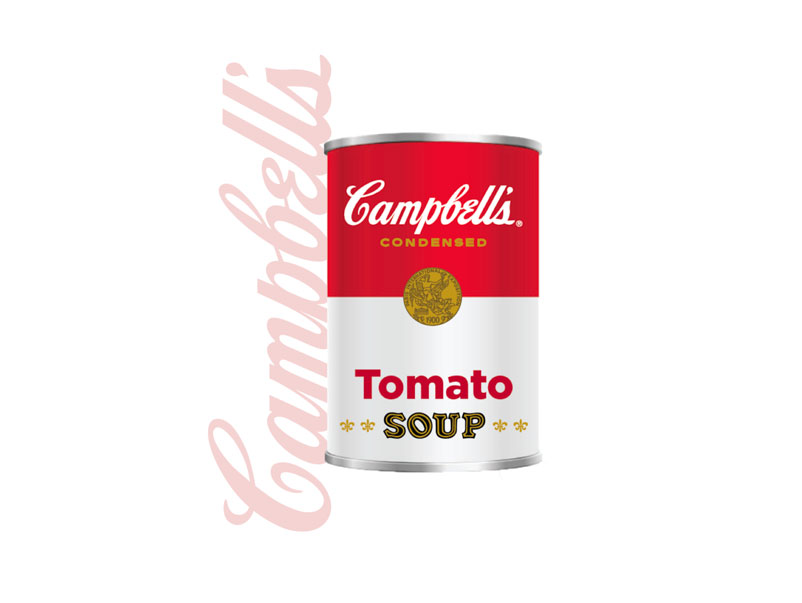Building trust and brand recognition happens over time through consistent, positive experiences with your company or product.
Being memorable is as much about compelling content as it is about clear, repeated messaging that’s easy to recall. Consistency in voice and visuals makes customers feel safe and builds trust in your brand or product because people know what to expect from you—every time.
So, before you spend too much time and energy agonizing over how to put cutting-edge creative spin on your brand, take a look at what you’ve already got and think about how you can make it more consistent and repeatable, often without reinventing the wheel.

Geico has trained us all to know that 15 minutes can save us 15% on car insurance. Sure, it’s easy to remember, but they’ve also reminded us a million times over.

Lush Cosmetics has their recognizable brand visuals on lather, rinse, repeat for a consistent experience in-store and online.

Campbell’s has barely changed their iconic red and white packaging in decades, and it’s a big part of the reason their brand basically defines the entire soup category in consumer packaged goods.

Arby’s has built their brand on iconic images of super-stacked beef and sesame seed buns for decades, and now it’s in our collective consciousness that they “have the meats.”
How to leverage consistency and repetition for your brand …
Consider every touchpoint.
Every time you put a message out there, it’s important to consider all the places and ways your customers could and should encounter it.
If you’re running a sale, think about how that sale can be promoted in-store and online, and create coordinating marketing materials to bring it to life. Will the sale be online only? Consider adding bag inserts at checkout leading up to the sale to encourage repeat purchases. Is it a BOGO offer? Consider in-store shelf-talkers on coordinating items to encourage natural up-sells.
Establish brand guidelines.
Whether you hire professionals to make a thorough brand book—positioning, voice, visuals, the works—or you DIY a simple branding toolkit, it’s easier and faster to build out marketing materials when basic design decisions are already established. At a minimum, commit to a set of colors, fonts, and graphic treatments to act as a toolkit to stay on brand.
- Make a brand guide that clarifies how your brand can look, sound, and feel—colors, typography, voice, tone, text treatments, logo usage, etc
- Organize an asset library to keep all of your visual essentials in one place that’s easy for you and your team to access.
- Save Lightroom settings to make all of your photography look and feel on-brand. If a custom photo shoot is out of your budget, this is a great way to give basic, mismatched, stock photos a cohesive, branded style.
- Use consistent type styling. At a minimum, decide whether your brand uses title case, sentence case, or punctuation in headlines, and make sure to use the same approach every time (or set guidelines about when and how you can break from your norm). Taking this one step further, it’s also helpful to consider optional spelling, grammar, and punctuation rules and keep track of how your brand decides to apply them.
Some Subjective Proofing Considerations
Oxford versus Stanford comma—it’s a hot debate, we know, and for consistency’s sake, you’ll need to choose sides.
Hyphenation—if a compound phrase is frequently used in your messaging and generally works either way (for Circa, high-five versus high five), pick your hyphenation preference and run with it.
Stick to a script.
- Craft a value-packed one-liner by describing a relatable problem your audience has, the solution you offer, and the reward your customers or clients are sure to get. We love the way that Storybrand teaches this formula.
- Lead with your why. Start by telling people what you stand for, what you believe in, and why you wake up and work hard every day. If your mission is unclear (to you or your customers) authenticity is going to be an uphill battle for your brand. Loyalty and trust don’t happen because of what you sell, they happen because of what you believe and how you prove those beliefs in all that you do. *Recommended reading: Start With Why by optimist and Ted Talker, Simon Sineck. And if you need a lazier, TLDR; version, his Ted Talk from 2009 was unforgettable.
- Clearly label your products and/or services, and talk about them the same way every time so that there’s no question about what you offer or how to get it.
Reduce, reuse, recycle your assets.
Make the most of photoshoots, custom illustrations, and layouts that you design by repurposing them across all of your marketing channels. Memorable marketing is built on repetition, and repurposing visuals and key messaging across every part of your campaigns will make people more likely to recognize your advertising and recall your offers. Plus, it’s a timesaver to not reinvent the wheel with every touchpoint along the way.
- Design one versatile key visual for each of your campaigns. Think of this preliminary layout as a reference point and testing ground for high-level design decisions before bringing your promotion to life everywhere. And don’t just think about visuals—iron out headlines, calls-to-action, and copy details, too.
- Make campaign-specific brand guides that clarify how your promotion materials can come to life across multiple touchpoints. Like a regular brand guide, it’s helpful to note colors, typography, messaging, graphic placements, and required legal phrasing if necessary.
- Organize an asset library for each campaign to keep all of your promotions building blocks in one place that’s easy for you and your team to use. Again, just like your masterbrand, campaign creative is easier to design quickly and consistently with a toolkit of “stuff” that’s prepared ahead of time and easy to access.
In conclusion, when Pete and Repeat walk into a bar …
Just kidding. Jokes aside, I hope these tips resonate with you and your team and help you identify missing pieces within your own brand. With a strong mission, a clear script, and all your assets at arms reach, I promise your marketing will get easier, faster, and more memorable.
